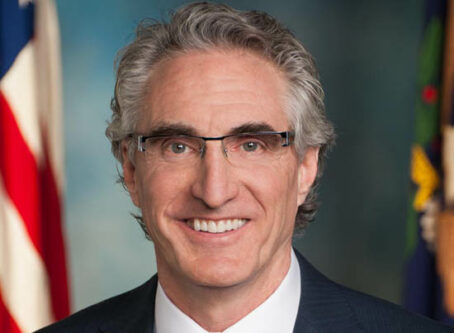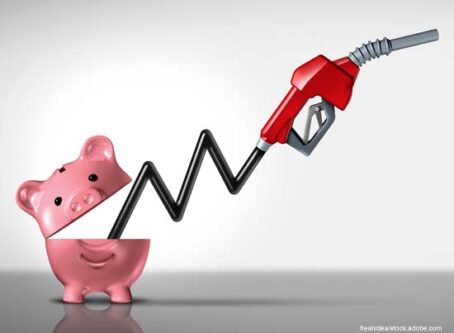2022 and the echoes of 1973
It’s not the same for truckers, of course, but it does feel familiar.
Soaring diesel prices are pummeling trucking – especially owner-operators. Possible fuel shortages loom as well, influenced at least in part by the invasion of Ukraine by Russia, a major oil supplier to the world.
Then there are all the people who spent their COVID recovery checks so fast that the stuff they bought clogged our transportation systems. And for the first time in a long time, the general public saw real truck drivers on TV, as reporters accosted drivers to ask what the problem was.
To old-timers like me, it’s a faint but distinct echo of a trucking upheaval almost 60 years ago. In late 1973, as the U.S. backed Israel in the Yom Kippur War that year, some Arab nations, including Saudi Arabia, stopped oil shipments. Fuel prices shot up, supplies were limited, and things got really ugly.
I was working nights then, driving LTL linehaul in the Northeast, often between North Bergen , N.J., and Lancaster, Pa. I was worried. During a strike by many independents, someone was shooting at working truckers in eastern Pennsylvania.
December 1973
The trouble began on Dec. 3, when truckers in Connecticut attempted to blockade I-84. They were dispersed by police. Truckers in Ohio similarly failed to block a highway near Lima. More serious trouble arose in Pennsylvania. One group briefly blocked the entrances to I-80 in Easton. Another attempted to block a Pennsylvania Turnpike interchange near Pittsburgh.
As Rolling Stone reported, “Talk of a shutdown on the 13th and 14th of December spread from truckstop to truckstop, but J.W. “River Rat” Edwards couldn’t wait.”
“On the evening of December 3rd, the 41-year-old company driver was hauling along Interstate 80, the looping asphalt jugular running through Illinois, Indiana, Ohio and Pennsylvania to connect America’s East and West. Outside of LaMar, Pennsylvania, River Rat’s gas gauge hit empty and his truck began to make the small jerks and wrong sounds that mean a dry tank.”
In Lamar, Pa., that day, Edwards slowed along I-80, ran out of fuel, blocking the eastbound lanes entirely. Traffic backed up quickly behind him.
“What the fuck, he figured, this is as good a time and place as any. His GMC rig rolled to a stop in the slow lane and the Kansas City driver left it in the road.”
As word of Edwards’ “impromptu” blockade spread over the CB, other truckers decided to block traffic as well. Soon, scores of trucks plugged I-80, one of the country’s major economic arteries. State police were dispatched to the scene. So were reporters and media helicopters. The blockade made great video on the evening news.
Diesel prices had jumped from an average 27 cents a gallon to as high as 45 cents, but price was only part of the problem. Truck stops were receiving only 60% to 85% of the fuel they ordered and were rationing supplies. Truckers who normally bought 100 gallons or more at a time were limited to 50 or 25 gallons and sometimes as little as 10. Some were forced to hop from one truck stop to the next, waiting in long lines at each.
Desperate drivers shared their frustrations over CB radios that had recently become popular. An estimated 25% of truckers had CBs at the time – enough, it turned out, to create a new kind of critical mass.
As word of the I-80 incidents spread on the CB, blockades erupted around the Northeast. I found myself in one briefly on I-80 in New Jersey. That one and most of the others were quickly broken up by police, but in Pennsylvania, where metal industries employed large numbers of independents, four more major highways were successfully barricaded. “River Rat” Edwards and his supporters found themselves negotiating with Pennsylvania Gov. Milton Shapp and then with representatives of the federal government, who had no idea who else to negotiate with.
In the days that followed, Interstate 70 was blockaded at Cambridge, Ohio, as were state highways near Columbus. Thousands of trucks clogged the Ohio Turnpike, which stayed closed for almost a full day. Ohio’s governor called out the National Guard to assist overwhelmed police.
Spectacular blockades clogged the Delaware Memorial Bridge on I-95, on I-40 between Little Rock and Memphis, and on the Indiana Toll Road near South Bend. Police began acting more forcefully, and the Nixon administration threatened to deploy troops to keep highways clear.
The blockades stopped, but various groups of drivers declared that they were on strike.
Negotiations, but with who?
In response to the fuel crisis, the Nixon administration and Congress would impose, among other things, a national 55 mph speed limit, all-year daylight saving time, and even a moratorium on Christmas lights. But the more immediate concern was the spontaneous, essentially leaderless strike by independents. The administration had no idea how to deal with it.
In a clumsy move, Nixon sent William Simon, who would later become secretary of the treasury, to negotiate a settlement. A clueless Simon met with Teamster President Frank Fitzsimmons, whose corrupt union had nothing to do with the owner-operators. After the meeting, Simon announced that the strike was over and everyone should go back to work. To no one’s surprise – except maybe Simon’s – nothing happened. Later, after the administration allowed carriers to impose a fuel surcharge, the crisis finally began to ease.
During those tumultuous weeks, trucks were news. Drivers appeared in newspapers, magazines, on the network news and talk shows. I wrote about it, and sold the piece for $25 – the first time I ever published.
For a while, Americans were fascinated by it all. CB radio sales soared and the entertainment industry took a belated cue. A B movie named “White Line Fever” starring Jean Michael Vincent was rushed into production. Song writers Bill Fries and Chip Davis turned out a tune about a trucker named Rubber Duck. Recorded by C.W. McCall, “Convoy” made number 21 on Billboard’s top 100 hits of 1976. It also inspired the movie “Convoy,” an incoherent, big-budget flop starring Kris Kristofferson.
Far more successful was a young trucker named Jim Johnston. He was called upon by “River Rat” Edwards for help negotiating with lawmakers. A number of ad hoc trucker groups popped up during the crisis, but only the one formed then by Johnston survived to become a powerful voice for all truckers – the Owner-Operator Independent Drivers Association, OOIDA.
Sobering coda
There was a sorry sequel to the trucking crisis of 1973-74. It happened in 1979 after the revolutionary government of Iran took the staff of the U.S. embassy in Tehran hostage and we stopped buying Iranian oil. The resulting shortfall was nothing like the Arab oil embargo, but panic spread anyway. Motorists began topping off their tanks, lines at gas stations grew, and fuel prices jumped. Diesel went from 60 cents a gallon to 90 cents, and on June 26 a handful of truckers on I-495, the Long Island Expressway, formed a slow-rolling roadblock. The police simply escorted the truckers until the blockade dissipated.
It should have ended there, but a magazine editor and would-be trucking leader named Mike Parkhurst unilaterally declared a truckers’ strike. The governor of Minnesota had to declare an emergency when meat-packing plants were blockaded, and truckers demonstrating outside Philadelphia were joined by as many as 2,000 locals who started a riot. In that melee, a United Van Lines driver rolled over a police officer’s hand and was charged with attempted homicide by motor vehicle. In Alabama, a sniper shot three working drivers. One of them died.
In just a couple of weeks, it was all over. Parkhurst’s strike had been a short, pointless, and for at least one driver and his family, a tragic disaster. LL









